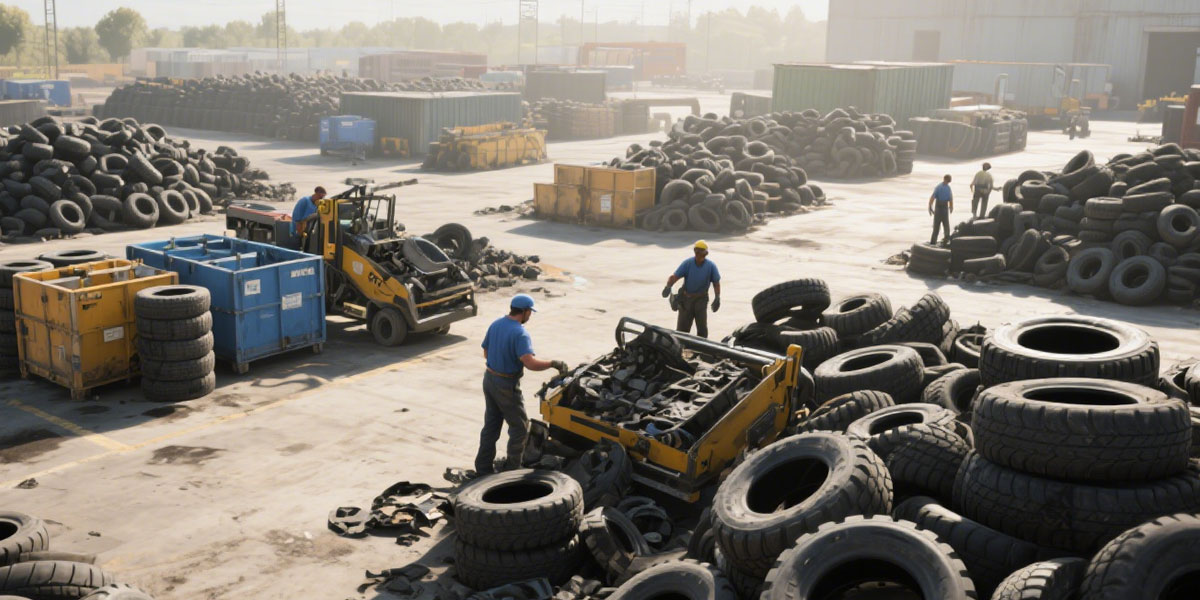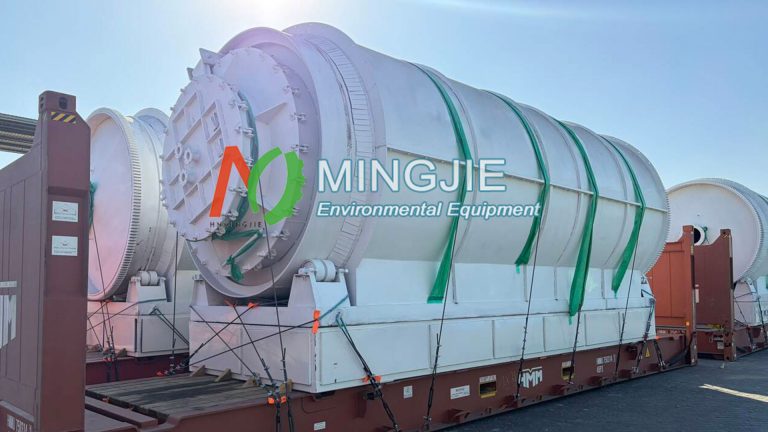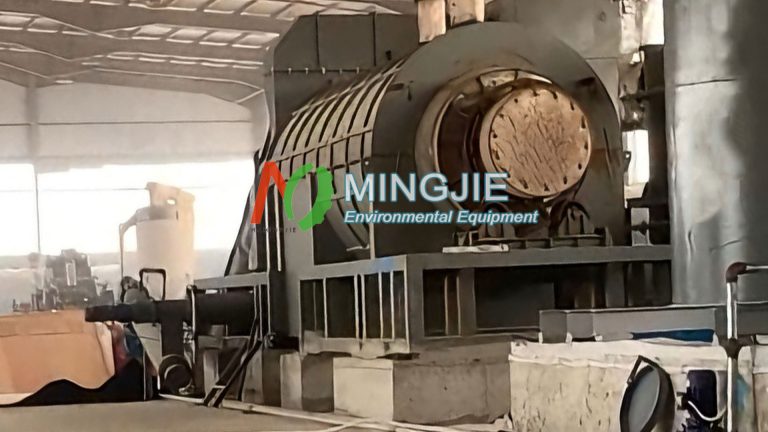Scrap tire recycling plants convert tires into reusable resources or products through physical, chemical, or biological methods. Their goal is to extract materials such as rubber, steel wire, and fiber from tires. These products can then be used for recycled rubber, high-value products, or energy. An effective tyre waste recycling process involves breaking tires down into reusable materials such as rubber, steel, and textile fibers.
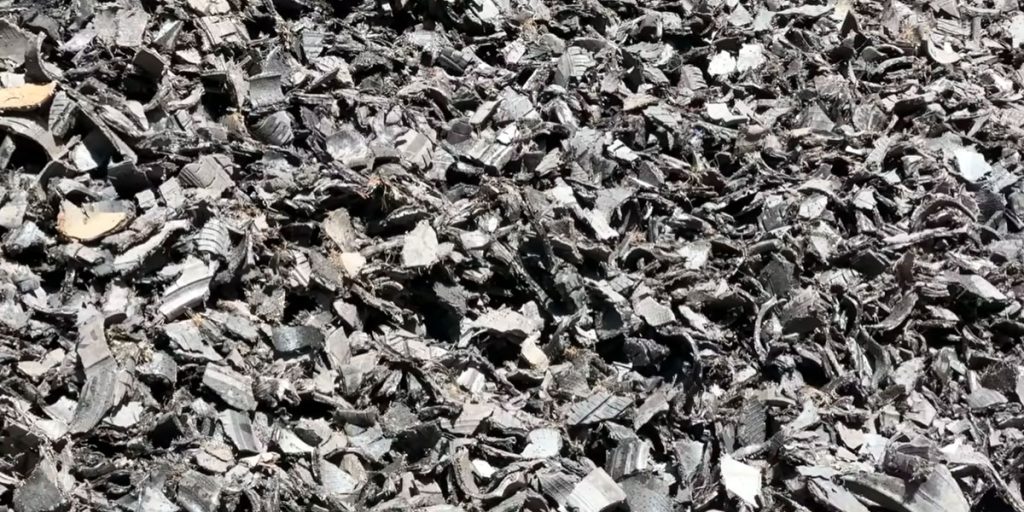
Mingjie Group offers complete and innovative solutions for scrap tyre recycling requirements. Effective tyre waste recycling methods include:
Shredding: Tire waste is broken down into smaller pieces. Tire shreds can be used as rubber mulch or in construction projects.
Crushing: This process shreds tires into fine rubber particles, which are ideal for sports fields, playgrounds, and industrial flooring.
Pyrolysis: Tire rubber is converted to pyrolysis oil, syngas, and carbon black in tyre pyrolysis plant.
Value of Tyre Waste Recycling
Waste tires pile up like mountains in the wilderness and linger in rivers, their degradation process often taking centuries. These “black waste” are not insurmountable waste; they hold immense, often overlooked value.
After mechanical shredding, the tough rubber from scrap tires can be made into runway tracks, floor tiles, and even asphalt-modified road paving materials. Furthermore, recycled rubber technology allows waste rubber to be used again in the manufacture of new tires or hoses, completing the tyre waste recycling.
Through advanced pyrolysis technology, waste tyre is converted into fuel oil, carbon black, syngas and steel wire. Fuel oil can be used as an industrial fuel, carbon black is a key raw material for rubber products, and steel wire returns to metallurgical furnaces.
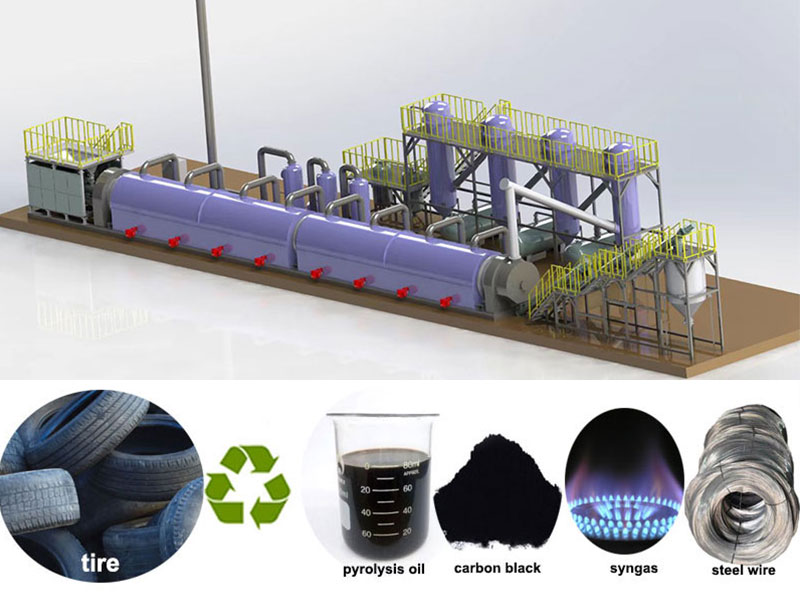
Pyrolysis Tire Recycling Project
The pyrolysis tyre waste recycling has undoubtedly transcended a simple technical issue. It has become a systematic project that addresses the coordinated development of resources, the environment, and society.
After trimming and removing steel wire, scrap tires are crushed into rubber pellets approximately 1 to 2 mm in diameter. These pellets undergo a thermal cracking process and are regenerated into a variety of high-value-added products, including pyrolysis oil and carbon black. This achieves resource-saving, environmentally friendly, and high-value recycling of scrap tires.
According to the person in charge of a domestic continuous pyrolysis tyre waste recycling project, “Currently, pyrolysis is one of the most optimal methods for treating waste tires.” Through pyrolysis, a single waste tire can be converted into approximately 38% pyrolysis oil, 33% carbon black, 20% steel wire, and 9% combustible gas.
Pyrolysis oil is an ideal fuel for industrial boilers such as asphalt mixing plants and can also be burned directly as an energy source or used for power generation. Carbon black is a key raw material for the production of industrial products such as rubber products, printing and dyeing inks, and activated carbon. Steel wire can be recycled for metal smelting.
The pyrolysis tyre waste recycling project utilizes two continuous tire pyrolysis production lines. The tire pyrolysis plant officially began operations in 2019, and the two pyrolysis lines can process 40,000 tons of waste tires annually.
The person in charge of the pyrolysis tyre waste recycling project stated that compared to waste accumulation, landfilling, and incineration, pyrolysis of waste tires now achieves zero pollution, zero residue, zero emissions, and full utilization. Tire pyrolysis better meets the requirements of green, low-carbon, and high-quality development.
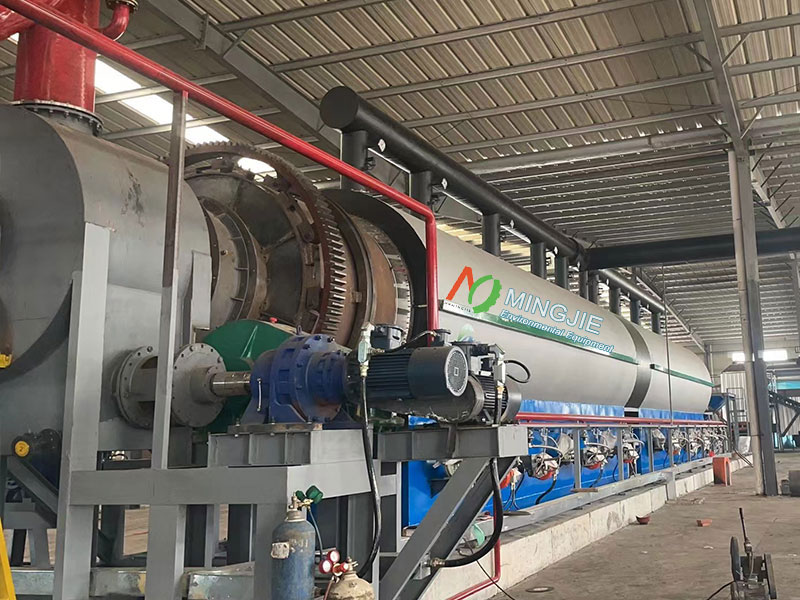
How Long Does A Fully Continuous Tyre Pyrolysis Plant Take?
The time required for fully automatic tyre pyrolysis plant varies depending on factors such as equipment, process, and processing volume. The process flow and corresponding time are as follows:
Crushing system: The waste tires are crushed into small pieces and magnetically separated to remove most of the steel wire. This process is relatively short, typically taking about 1-2 hours, depending on the crushing equipment’s processing capacity and the tire’s initial condition.
Continuous pyrolysis system: Tire rubber powder is continuously fed into the pyrolysis reactor via automatic feeder. The pyrolysis reaction occurs under a slight negative pressure at a temperature of approximately 440°C. This process typically takes 4-6 hours to ensure complete tire pyrolysis, converting rubber and other substances into products such as pyrolysis oil, carbon black, and combustible gas.
Heating system: The pyrolysis reactor uses indirect heating. The material is pyrolyzed in the inner drum of the pyrolysis reactor, while the outer drum uses high-temperature flue gas as a heat source to provide heat. The heating system varies during equipment startup and full operation. During startup, natural gas or other heating media is required for 1-2 hours to reach a stable temperature. During operation, synthesis gas is used to continuously provide heat for the tyre waste recycling pyrolysis process.
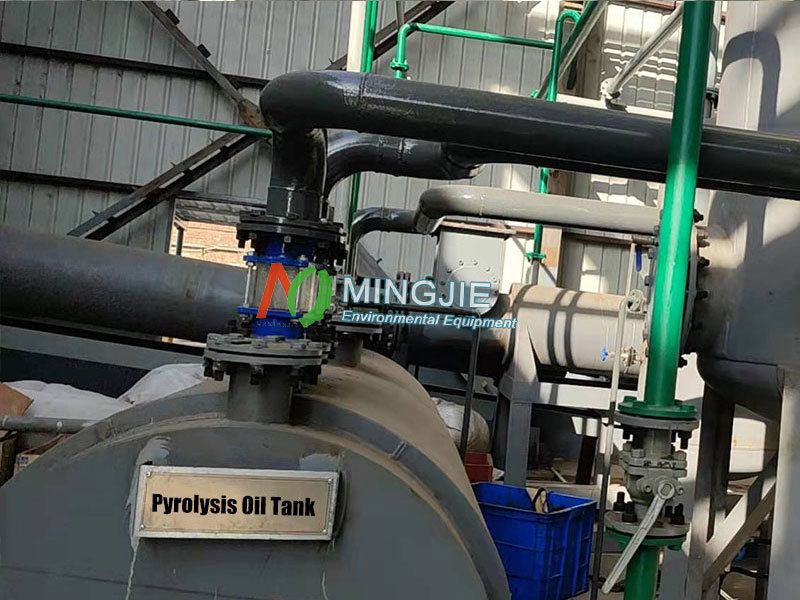
Oil-Gas Separation System: After cooling and separation, the oil and gas discharged from the continuous pyrolysis reactor enter the oil collection tank and are pumped to the tank farm via an oil pump. Non-condensable combustible gas enters the combustible gas purification system. This process typically takes 1-2 hours to complete the cooling and separation of the oil and gas.
Combustible Gas Purification and Transportation System: The syngas is purified in the combustible gas purification system, and then is conveyed through a water-sealed tank to a surge tank. The purification process typically takes 1-2 hours to ensure the quality and stability of the combustible gas.
Discharge System: Tire pyrolysis carbon black is water-cooled and then conveyed to a carbon black collection bin. The discharge process typically takes 1-2 hours, depending on the efficiency and processing capacity of the discharge equipment.
Carbon Black Processing System: Carbon black processing involves magnetic separation, grinding, drying, and packaging the crude carbon black obtained from continuous tyre pyrolysis plant. The carbon black processing line is a fully enclosed system. This process is lengthy, typically taking 4-6 hours, depending on the amount of carbon black processed and the processing technology.
Flue Gas Purification System: After cooling, the recycled waste gas enters the flue gas purification tower, where it undergoes multi-stage purification before meeting emission standards. The flue gas purification process typically takes 1-2 hours to ensure that the flue gas meets emission standards.

